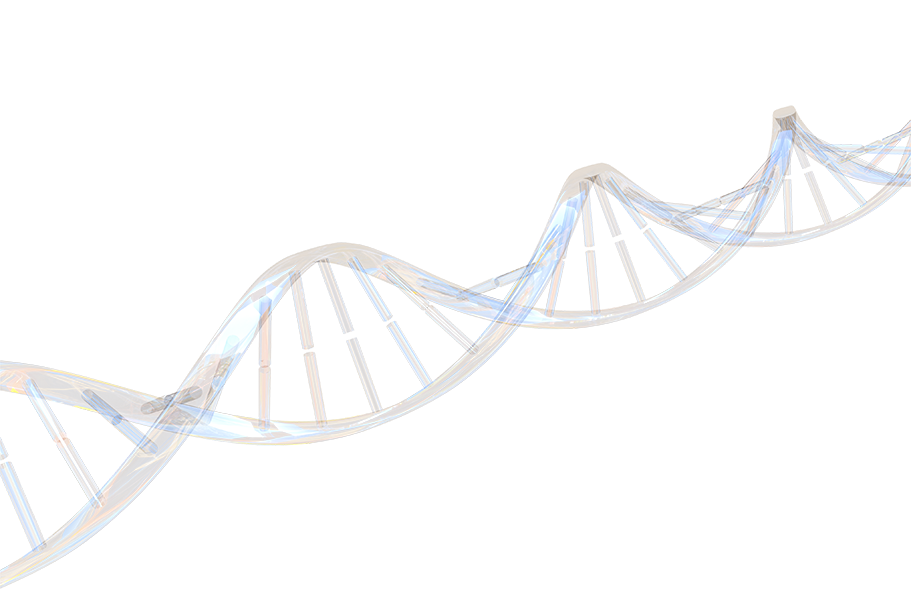DNA Damage and Aging: Mapping the Genomic Fault Lines of Time
The Central Role of DNA Damage in Aging
Aging is increasingly understood as a manifestation of accumulated genomic instability. Across tissues, cells continuously experience DNA lesions — including base modifications, single- and double-strand breaks, and crosslinks — generated by reactive oxygen species, replication stress, and environmental exposures. Estimates suggest each human cell sustains 10⁴–10⁵ lesions daily (Lombard et al., 2005; Schumacher et al., 2021).
Over time, DNA repair pathways decline in fidelity and efficiency, leaving residual damage that compounds with each cell cycle. Persistent breaks activate the DNA damage response (DDR) — a surveillance network that halts the cell cycle, attempts repair, or, if the damage is irreparable, drives the cell toward senescence or apoptosis (Lombard et al., 2005; Hoeijmakers, 2009; Ciccia & Elledge, 2010).
While initially protective against tumorigenesis, chronic senescence and apoptosis lead to stem cell depletion, altered intercellular signaling, and systemic inflammation — all contributing to age-related decline (Campisi & d’Adda di Fagagna, 2007; Gorgoulis, 2019). Thus, DNA damage is not a by-product of aging but a mechanistic driver that connects many hallmarks of aging: genomic instability, epigenetic drift, and stem-cell exhaustion.
When DNA Damage Becomes Disease
- Neurodegeneration: Neurons, which rarely divide, accumulate DNA damage that disrupts transcription and synaptic function. Persistent double-strand breaks correlate with cognitive decline and neurodegenerative pathologies such as Alzheimer’s and Parkinson’s disease (Madabhushi et al., 2015; Suberbielle et al., 2013).
- Vascular and Cardiac Aging: DNA damage in endothelial and smooth-muscle cells promotes senescence, inflammation, and loss of vascular elasticity, accelerating atherosclerosis (Bautista-Niño et al., 2016).
- Cancer: Mutagenic repair and chromosomal instability arising from accumulated damage underpin the exponential rise in cancer incidence with age (López-Otín et al., 2013).
- Immunosenescence: DNA damage in hematopoietic stem cells constrains immune renewal and contributes to clonal hematopoiesis, a risk factor for malignancy and infection (Biechonski et al., 2017).
Collectively, these data position DNA damage as a shared upstream factor in multiple age-related disorders.
From Bulk Measures to Resolved Insight
Conventional assays — such as comet assays, γH2AX foci, or mutation accumulation — provide limited resolution on where and why DNA damage arises. Yet understanding breakage patterns at sequence resolution is essential to decode how specific genomic loci may drive aging phenotypes. Understanding where breaks form — in coding regions, repetitive elements, or regulatory domains — can help determine how cells age and respond to stress.
BreakSight’s platform, comprising DDsite and DDinsight, introduces a genome-wide approach for labeling DNA double-strand breaks (DSBs) directly within cells, selectively capturing and sequencing the break fragments, and then mapping them across the genome (breaksightdna.com).
- DDsite tags and retrieves break ends across coding and noncoding regions, revealing reproducible patterns of endogenous and induced DNA damage.
- DDinsight computationally analyzes these maps to identify hotspots, motif enrichments, and structural features correlated with cellular state or treatment.
Unlike mutation-based readouts, which reflect long-term outcomes of past repair events, BreakSight captures current snapshots of genomic stress — enabling researchers to quantify and localize ongoing instability.
Applications in Aging and Disease Research
- Charting age-dependent break landscapes: Compare DSB distributions between young and aged tissues to identify regions increasingly prone to damage or repair failure.
- Identifying fragile genomic loci: Map recurrent breaks within regulatory and repeat-rich regions linked to senescence or transcriptional silencing.
- Assessing interventions: Evaluate how caloric restriction, DNA repair enhancers, or senolytic compounds alter genome-wide breakage profiles.
- Mechanistic modeling: In progeroid or DNA repair-deficient models (e.g., Ercc1, Wrn), BreakSight can delineate how specific repair pathway deficits reshape breakage landscapes.
- Biomarker discovery: Persistent, locus-specific breaks may serve as markers of biological age or predictors of therapeutic response.
Together, these applications position BreakSight’s approach as complementary to mutation-, methylation-, or expression-based biomarkers — extending genomic readouts into the previously underexplored dimension of breakage state.
Forward Outlook
Genome maintenance capacity defines much of an organism’s longevity potential. By providing precise maps of DNA breaks across chromosomes, BreakSight’s DSB-mapping platform provides the precision tools to explore these underexamined fault lines in the aging genome.
BreakSight’s technology enables researchers to move beyond global damage metrics toward a locus-resolved understanding of how genomic instability drives aging and its associated diseases. Integrating high-resolution break mapping with transcriptomic and chromatin data could illuminate early, reversible nodes in the aging trajectory — and inform interventions that extend healthspan through preservation of genome integrity.
References
- Lombard, D. B., et al. (2005). DNA repair, genome stability, and aging. Cell, 120(4), 497–512.
- Schumacher, B., et al. (2021). The central role of DNA damage in the ageing process. Nature, 592(7856), 695–703.
- Hoeijmakers, J. H. J. (2009). DNA damage, aging, and cancer. The New England Journal of Medicine, 361(15), 1475–1485.
- Ciccia, A., & Elledge, S. J. (2010). The DNA damage response: making it safe to play with knives. Molecular Cell, 40(2), 179–204.
- Campisi, J., & d’Adda di Fagagna, F. (2007). Cellular senescence: when bad things happen to good cells. Nature Reviews Molecular Cell Biology, 8(9), 729–740.
- Gorgoulis, V., et al. (2019). Cellular senescence: defining a path forward. Cell, 179(4), 813–827.
- Madabhushi, R., et al. (2015). Activity-induced DNA breaks govern the expression of neuronal early-response genes. Cell, 161(7), 1592–1605.
- Suberbielle, E., et al. (2013). Physiologic brain activity causes DNA double-strand breaks in neurons, with exacerbation by amyloid-β. Nature Neuroscience, 16(5), 613–621.
- Bautista-Niño, P. K. et al. (2016). DNA damage: a main determinant of vascular aging. International Journal of Molecular Sciences, 17(5), 748.
- López-Otín, C., et al. (2013). The hallmarks of aging. Cell, 153(6), 1194–1217.
- Biechonski, S., et al. (2017). DNA-damage response in hematopoietic stem cells: an evolutionary trade-off between blood regeneration and leukemia suppression. Carcinogenesis, 38(4), 367–377.
- BreakSight DNA. (2025). Platform Overview: DDsite and DDinsight. https://www.breaksightdna.com.






